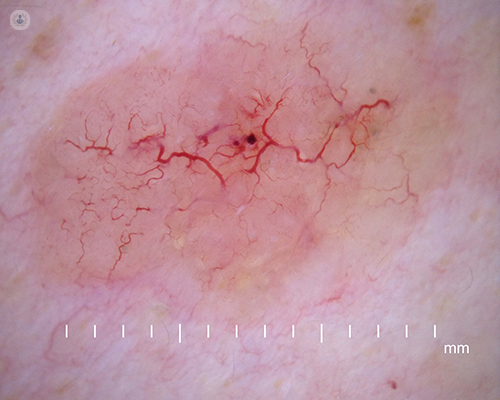

What is dermoscopy?
Dermoscopy, which is also known as dermatoscopy, is a skin examination technique that uses a dermatoscope. A dermatoscope has a high quality magnifying lens which allows careful examination of the skin structure, and can be used to diagnose skin cancer and to map moles. A dermatoscope is a hand-held device that takes high-resolution photos.

What does dermoscopy involve?
Using a dermoscope, skin lesions are evaluated in terms of their pigmentation, colours and structure (symmetry, uniformity, border shape). Evaluating these characteristics can aid in the diagnosis of the following:
- Melanoma
- Benign moles
- Pigmented basal cell carcinoma
- Haemangioma
Dermoscopy may also be used to examine the skin for the following:
- Hair loss
- Distinguishing skin conditions, such as psoriasis from eczema
Why is dermoscopy done?
When used by an expert, dermoscopy can be effective in identifying melanomas and confirming malignant skin cancers. This can reduce the number of unneeded excisions of benign lesions. Identifying melanomas by the naked-eye is not accurate, and using a dermoscope improves this. Dermoscopy can also be used for patients who have many melanocytic nevi (moles) that do not meet the criteria of a melanoma, but look suspicious. Hence, a dermoscopy can track any changes in these and determine whether or not a biopsy is required.
What to expect during a dermoscopy:
During a dermoscopy, a special liquid gel is applied to the area of interest and the dermoscope is placed onto the lesion for examination. This gel allows the clinician to see structures below the surface of the skin. Newer models of dermoscope have eliminated the need for using the gel. There is no discomfort felt during a dermoscopy.
What do abnormal results mean?
If malignancies are detected, treatment can be planned which will involve biopsy and excision.
